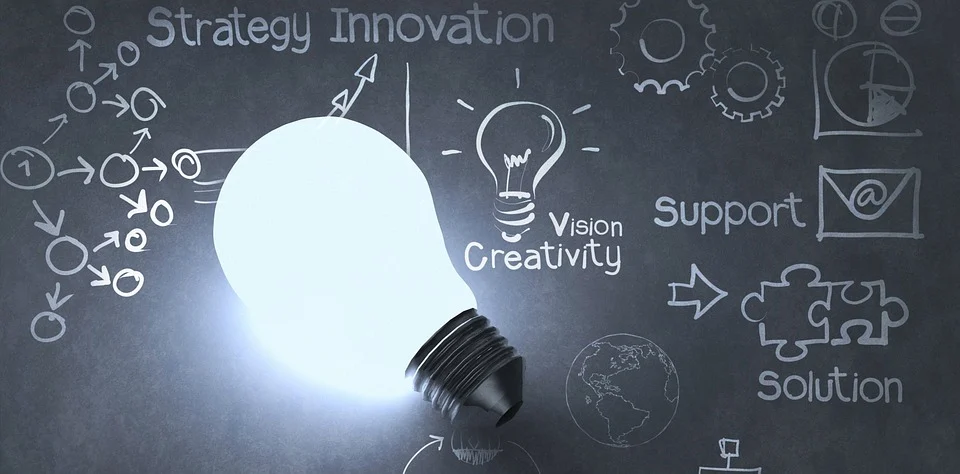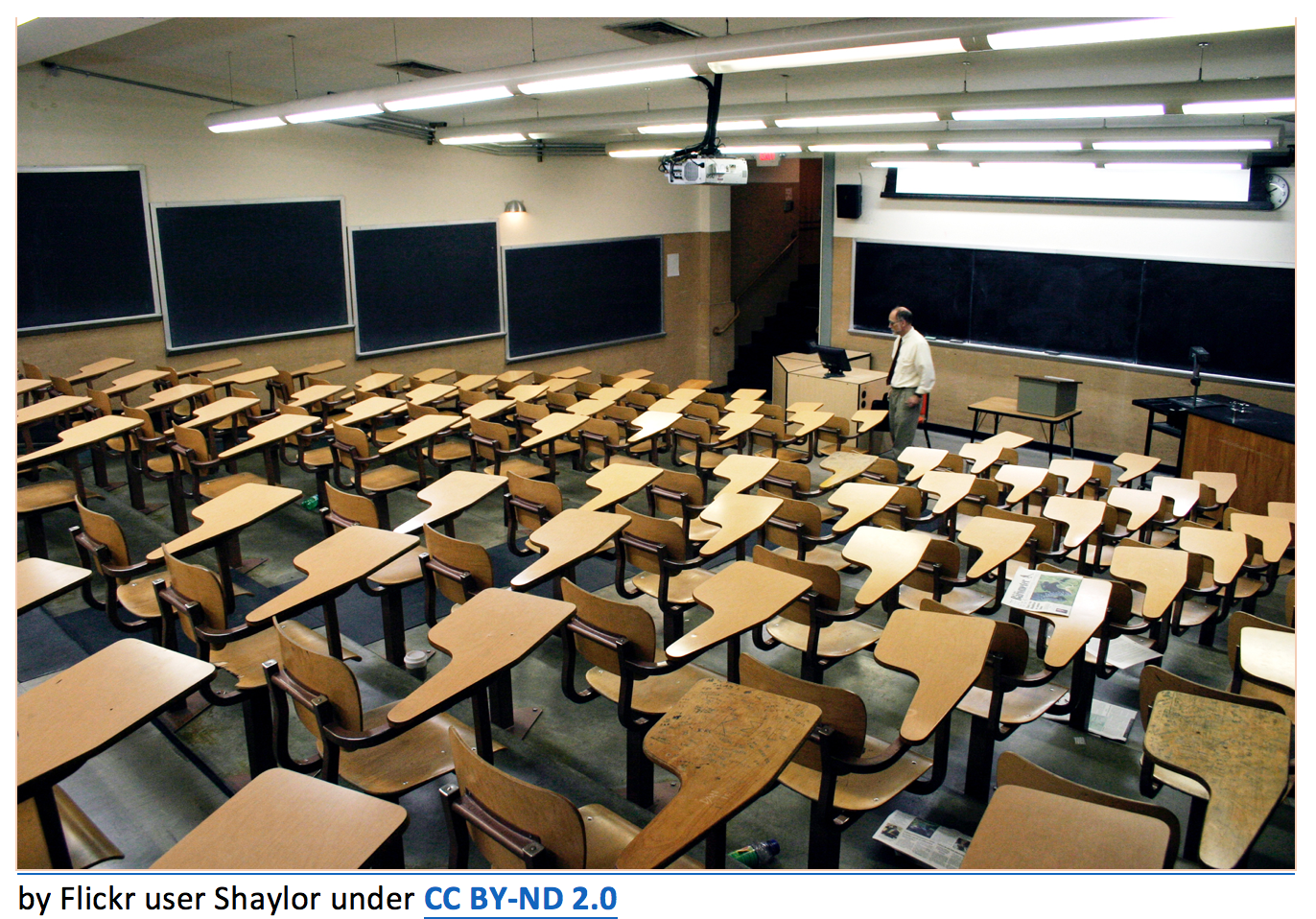Science gets a bad rap in our current educational system. Even though science is present in just about every aspect of a student’s life, it is sorely siloed and mechanized in far too many of our classrooms. And as we know, when a subject is piecemealed via PowerPoint and tests, students turn off; begging for relevance and meaning in a content-heavy curriculum. After all, shouldn’t education engage students with phenomena and critical thinking, with inquiry and problem solving, with wonder and excitement? All of these are crucial in understanding science!
When wonder is replaced with bite-size facts, it guts the essence of the scientific mindset, of “thinking like a scientist”.
Without grasping the big idea and using it to hold together related content of knowledge, we are left with bits and pieces of inert facts that cannot take us anywhere – G. Wiggins & J. McTighe
Big ideas connect phenomena that give teachers and students a blueprint for their own scientific understanding of the world.
Let’s have a look at “a tool that could help students increase their ability to make connections between different science concepts and phenomena from our everyday life” with
TEN BIG IDEAS IN SCIENCE EDUCATION:
All matter in the Universe is made of very small particles
Objects can affect other objects at a distance
Changing the movement of an object requires a net force to be acting on it
The total amount of energy in the Universe is always the same but can be transferred from one energy store to another during an event
The composition of the Earth and its atmosphere and the processes occurring within them shape the Earth’s surface and its climate
Our solar system is a very small part of one of billions of galaxies in the Universe
Organisms are organised on a cellular basis and have a finite life span
Organisms require a supply of energy and materials for which they often depend on, or compete with, other organisms
Genetic information is passed down from one generation of organisms to another
The diversity of organisms, living and extinct, is the result of evolution

This list from Big Ideas in Science is an overarching look at the interconnectedness of all worlds, which could help educators and students see the trees for the forest. Similar to the MEQ’s presentation of the four worlds in the Science and Technology program; The Material World, The Living World, The Earth and Space, and The Technological World.
So, how is a ‘big’ idea different from a ‘small’ idea that we tend to teach?
As explained by a renowned science educator, and editor of Working with Big Ideas of Science Education, Wynne Harlen, “Big ideas are overarching ideas that can be applied to a wide range of related events or phenomena. Small ideas have more limited applications, and usually apply to specific objects or events.” (ARG, 2002)
For example, the idea that the features of earthworms enable them to thrive underground is a small one, which becomes larger as other living things are studied, that can develop into a generalization that applies to all organisms.
Big ideas are not taught directly but are built from small ideas linked together. They are sometimes described as ‘powerful’ because they have greater explanatory power in helping learners to understand the world.
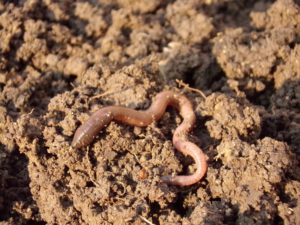 Much like an earthworm being one small part of an ecosystem, small ideas built upon one another, add to students growing understanding, for example, of a larger ecosystem.
Much like an earthworm being one small part of an ecosystem, small ideas built upon one another, add to students growing understanding, for example, of a larger ecosystem.
This is a journey that happens from elementary school right through secondary. When we consider “activities should develop and sustain curiosity; promote enjoyment of scientific activity; be seen by all students as interesting and relevant to their lives; develop scientific understanding, skills and attitudes; and enable them to make informed decisions that care for the environment and affect their own and others’ wellbeing.” (MEQ, MST Elementary)
Involving students in this process, by helping them to understand the goals of their work and standards to aim for, enables them to take some responsibility for, and reflect on, their learning. Feedback from teachers should give students information they can use to take their learning forward -Sebba
Sound easy? Well, it can be, but this requires educators to shift practices towards a student inquiry approach. Here learning can span across multiple disciplines, with much more formative assessments. That includes “seeking and interpreting evidence for use by learners and their teachers to decide where the learners are in their learning, where they need to go and how best to get there’ (ARG, 2002). Sounds vaguely similar to our competency-based program, don’t you think?
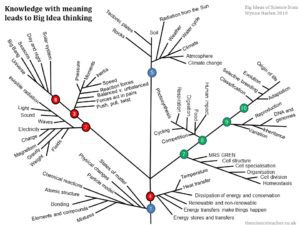
I love what British Columbia has done with big ideas in their science curriculum throughout K-10. For example, one of the big ideas in preschool is “Plants and animals have observable features,” which grows into cycle one as “Living things have features and behaviours that help them survive in their environment.”
Similar to Quebec’s science program, it is a competency-based system, for example, in preschool, the curricular competencies are:
- Demonstrate curiosity and a sense of wonder about the world
- Observe objects and events in familiar contexts
- Ask simple questions about familiar objects and events
- In cycle 1-2, the curricular competencies remain the same, but extend students’ journey with the addition of “Make simple predictions about familiar objects and events.”
As these competencies demonstrate, “Inquiry-based learning aspires to engage students in an authentic scientific discovery process. Such active learning strategies have proved to be among the most promising when it comes to increasing students’ learning” (Froyd 2008). Further studies into effective science teaching carried out by the researcher, Atilla Cimer states “meaningful learning occurs as students consciously and explicitly link their new knowledge to an existing knowledge structure since the process of trying to understand a phenomenon or explain an observation usually starts by referring to or building on our existing knowledge and based on that, try to come up with an idea that might explain it.” As opposed to our “traditional method of fragmented teaching deprives students of the opportunity to connect facts and observations and build upon their current knowledge in order to explain them. Thus, this method acts as a barrier, not only in building students’ cognition but also in developing their problem-solving skills.” (Cimer, 2007). Here’s a summary of the most effective science teaching practices that run inline with “big ideas in science” from Cimer’s study:
- Dealing with students’ existing ideas and conceptions
- Encouraging students to apply new concepts or skills in different contexts
- Encouraging student participation in lessons
- Encouraging student inquiry
- Encouraging cooperative learning among students
- Offering continuous assessment and providing corrective feedback
According to a 2016 research report in the Journal of Research in STEM Education, these practices are best implemented in an interdisciplinary inquiry-based type of learning that “also allows students to explore more in-depth, the subjects at hand and gradually modify their understanding of science from a set of isolated disciplines which are about unrelated topics and concepts to a coherent and well-orchestrated mechanism for making sense of our world”.
Now let’s all just acknowledge one thing about teaching science in our system. In elementary Cycle 1, it is not a timetabled subject but rather integrated into all subjects, however, educators do feel they lack the necessary knowledge to do science justice. Many teachers feel unable to cover all the concepts in the curriculum using the approaches mentioned above, thus often touching on science in a superficial manner. In secondary science, where teachers tend to have subject-matter expertise, hands-on, inquiry-based learning can take a back seat in order to prepare students for content-based tests that may be mandated by school boards. This is not anyone’s fault per se, but perhaps a greater emphasis needs to be embedded in our pre-service schooling that focuses more on inquiry and interdisciplinary practices, which mirror real-world practices in the sciences, rather than being driven by content and the need for the finding “right” answer.
An educator’s role changes somewhat when the focus moves away from content knowledge to an inquiry model where teachers and students actively learn together across many subjects. This co-learning doesn’t just motivate students’ interest, but relieves educators’ continuous burden of having to ‘cover the content’ solely through more passive materials like textbooks. This shift puts the learner centre stage and allows them to take a more active role in their learning.
What does this look like in practice? Have a look at the table below, where Wynne Harlen again states that “effective practice is: inquiry, individual and social constructivism, and the formative use of assessment” where activities should … (Harlen 2015).
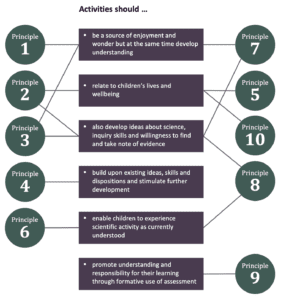
Principles and big ideas of science education Edited by Wynne Harlen With the contribution of Derek Bell, Rosa Devés, Hubert Dyasi, Guillermo Fernández de la Garza, Pierre Léna, Robin Millar, Michael Reiss, Patricia Rowell, and Wei Yu
Big ideas in science education are a great way to see the forest for the trees. Unlike the standard model of small bits of disconnected knowledge, the student science journey is about inquiry and understanding the big picture. If we want students to truly start ‘thinking like a scientist’ then we need to turn our classrooms into places of inquiry, discovery, and wonder, just like a science lab. With the big ideas in hand and a focus on principles of effective learning strategies, we can better prepare our students for a future that is vastly unknown.
*******************************************************************
Assessment Reform Group (2002) Assessment for learning Known as AfL for short (www.aaia.org.uk/content/uploads/2010/06/Assessment-for-Learning-10 principles.pdf) (accessed 7 March 2023).
The “Big Ideas of science” for the school classroom: Promotinginterdisciplinary activities and the interconnection of the science subjects taught in primary and secondary education (n.d.). Retrieved March 9, 2023.
Bowen, R. S. (2017). Understanding by Design. Vanderbilt University Center for Teaching. Retrieved [March 9th, 2023] .
Çimer, A. (2007). Effective Teaching in Science: A Review of Literature. Journal of Turkish Science Education (TUSED), 4(1).
Froyd, J. E. (2008). White paper on promising practices in undergraduate STEM education. Commissioned paper for the Evidence on Promising Practices in Undergraduate Science, Technology, Engineering, and Mathematics (STEM) Education Project, The National Academies Board on Science Education.
Harlen, W (ed.) (2015) Working with Big Ideas of Science Education. Trieste: IAP.
Progression des apprentissages – science et Technologie – Primaire. (n.d.). Retrieved March 21, 2023.
Science. Building Student Success – B.C. Curriculum. (n.d.). Retrieved March 9, 2023.
Sebba J (2012) Policy and practice in assessment for learning: the experience of selected OECD countries. In: Gardner J (ed) Assessment and Learning. 2nd ed. London: SAGE, pp.157-170.
Wiggins, Grant, and McTighe, Jay. (1998). Backward Design. In Understanding by Design. ASCD.
Photo credits:
Image of hands as a world atlas by stokpic from Pixabay

